11 Victorian Mirrors That Define the Era’s Luxury
Victorian mirrors are renowned for their beauty and ornate designs, which reflect the opulence of the 19th century. These mirrors were introduced during the Victorian era, from 1837 to 1901, when interior design reached new heights. They often featured luxurious materials such as gilded frames and intricate detailing. Their unique design elements made them not just functional but also decorative masterpieces. If you appreciate vintage style, these mirrors are a perfect way to bring a touch of history into your home.
This post may contain affiliate links, which helps keep this content free. Please read our disclosure for more info.
Victorian Gilded Wall Mirror
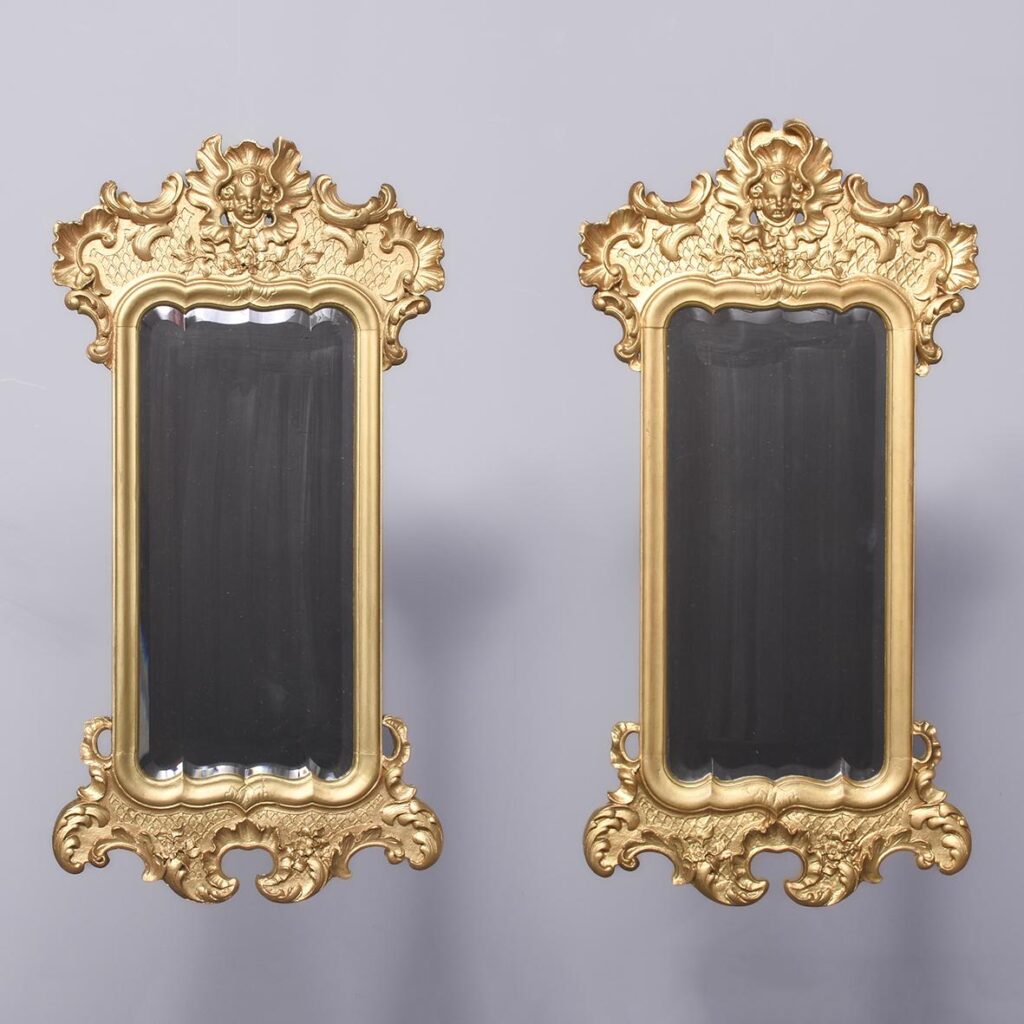
Produced during the late 1800s, the Victorian Gilded Wall Mirror is a prime example of ornate luxury. Its frame is richly gilded, showcasing intricate floral and scroll patterns typical of the period’s craftsmanship. This mirror was often used in grand hallways and parlors to reflect light and add a sense of space. The gilded frame was typically made of wood, with a layer of gold leaf to give it a lavish appearance. The market value of this mirror can range from $500 to $2,500, depending on its condition and the detail of the gilding.
What sets the Victorian Gilded Wall Mirror apart is its elaborate design and the use of gold leaf, which symbolizes wealth and status. The detailed carvings, often of roses or acanthus leaves, reflect the artistry of the time. It’s a classic piece that continues to attract collectors due to its timeless elegance. For those looking to add a piece of Victorian grandeur to their home, this mirror is an ideal choice. It remains a prized item for collectors who appreciate the period’s attention to detail.
Victorian Overmantel Mirror
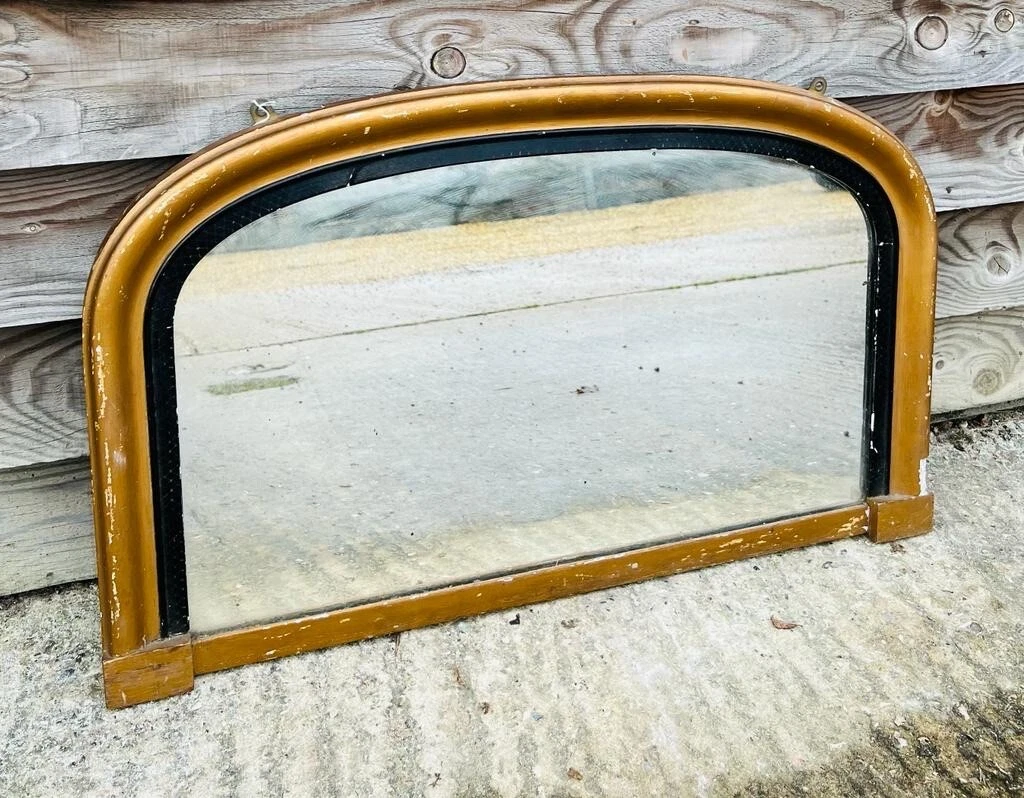
Dating back to the mid-1800s, the Victorian Overmantel Mirror was designed to be placed above a fireplace, often as a statement piece in the room. Its large, rectangular or curve-like frame was typically made of wood, and often adorned with detailed carvings, mirrors, or painted elements. This mirror was used not only to reflect light but also to enhance the architectural features of a room, making it feel more expansive. The market value for a Victorian Overmantel Mirror can range from $1,000 to $3,000, depending on size and craftsmanship.
The defining feature of this mirror is its grand size and decorative frame, which was meant to complement the mantlepiece below. These mirrors were often designed to reflect the ornate decor of the Victorian drawing room, adding a layer of elegance. Its wood frame was frequently gilded, but other finishes, such as dark mahogany, were also used. This mirror is ideal for large rooms, especially those with a fireplace, to add both luxury and function. Its classic design continues to evoke the rich style of the Victorian era.
Victorian Oval Mirror with Brass Detailing
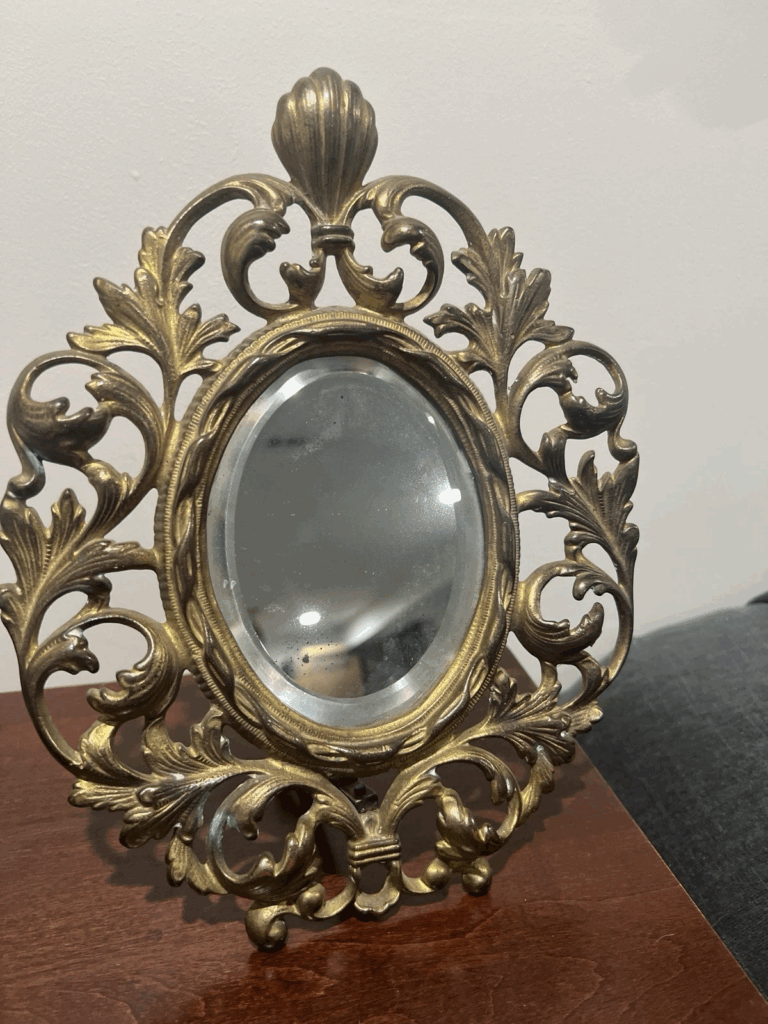
The Victorian Oval Mirror with Brass Detailing, produced in the late 19th century, features a beautifully curved frame, often adorned with intricate brass embellishments. This mirror was a staple in Victorian bedrooms and dressing areas, where its delicate design added both style and sophistication. The brass detailing around the frame usually included flowers, vines, or geometric shapes, offering a contrast to the softer oval shape of the mirror. Market values for this item typically range from $600 to $1,500.
What makes the Victorian Oval Mirror so distinctive is the combination of the smooth, elongated shape with the striking brass details. The use of brass adds a touch of metalwork to the wood frame, creating a balanced contrast between the two materials. The oval shape also gave this mirror a more refined, feminine appearance, making it a popular choice for women’s vanity areas. This piece still holds high value for collectors who appreciate the harmonious design that defines Victorian luxury. It’s an ideal mirror for any space in need of an elegant, classic touch.
Victorian Gesso Frame Mirror
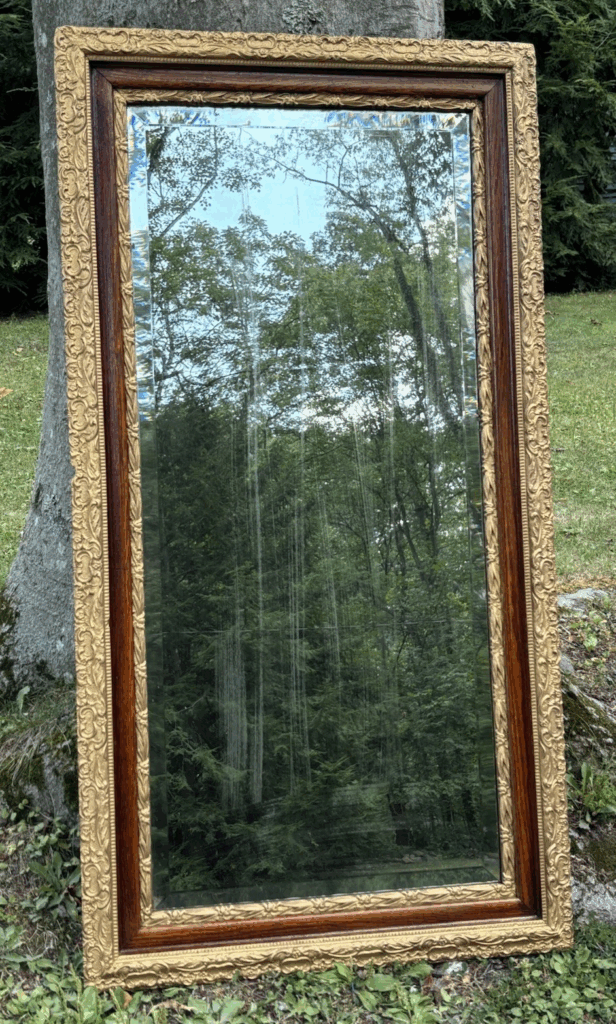
Made during the mid-to-late 1800s, the Victorian Gesso Frame Mirror features a lightweight frame made of wood covered in a plaster-like material known as gesso. The frame often displays detailed floral patterns and ornamental motifs, reflecting the luxurious tastes of the Victorian era. These mirrors were commonly found in entryways and living rooms, where their decorative frames were meant to impress guests. The value of this type of mirror generally falls between $400 and $1,200, depending on condition and intricacy of design.
The standout feature of the Victorian Gesso Frame Mirror is the sculptural quality of its frame, which was made to look like elaborate carvings but was much lighter than solid wood. The gesso finish allowed for more detailed patterns, and the frame was often painted or gilded to increase its visual appeal. This mirror evokes the Victorian love of opulence and the desire to bring nature’s beauty indoors through ornamental designs. Its relatively lightweight nature made it easier to hang in various rooms. The mirror’s lasting appeal lies in its combination of visual impact and functional use.
Victorian Pier Mirror
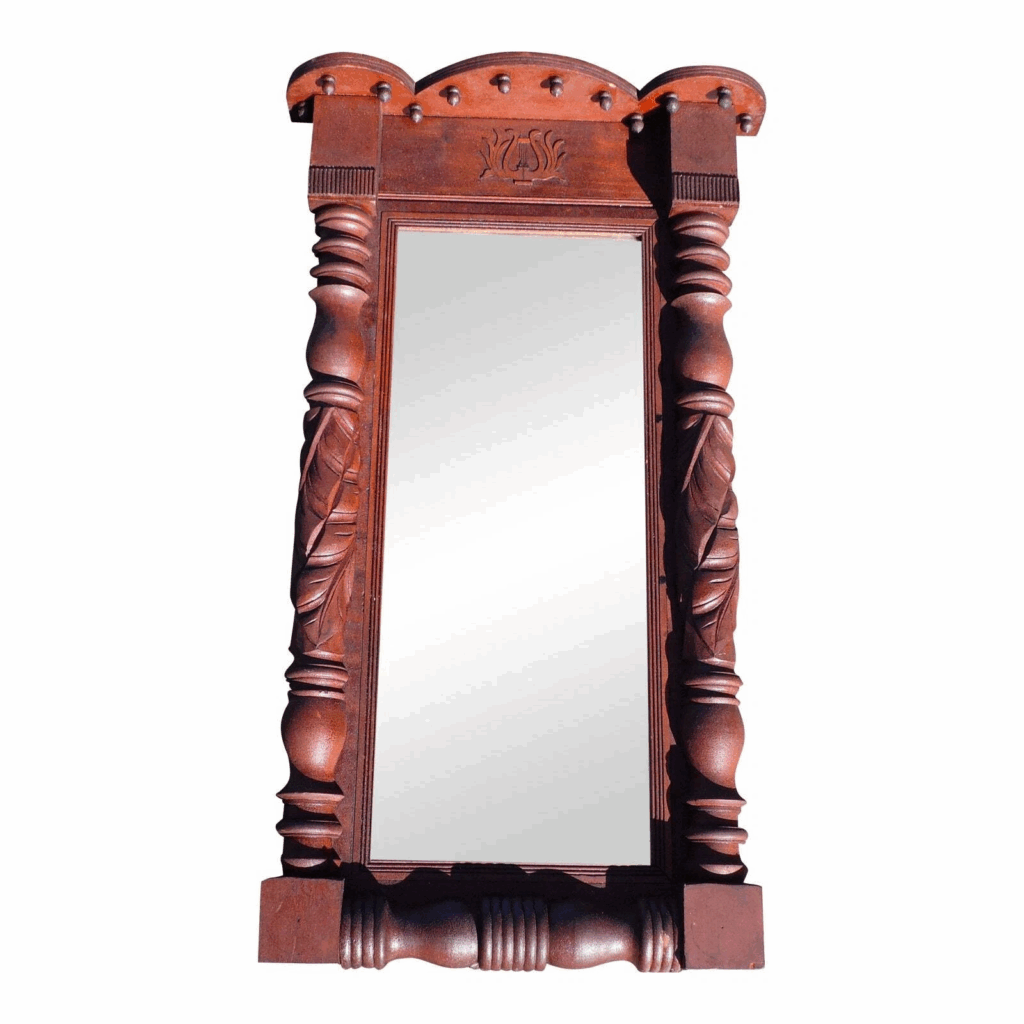
First created in the mid-1800s, the Victorian Pier Mirror was designed to stand tall, often placed in narrow spaces such as corridors or by windows. This large mirror with a vertical design was framed with rich wood, usually dark walnut or mahogany, and often featured simple but elegant carvings. The pier mirror’s primary purpose was to reflect light and create the illusion of a larger space, making it a staple in Victorian homes. Market values for this mirror range from $1,000 to $5,000, depending on craftsmanship and condition.
A key feature of the Victorian Pier Mirror is its height, which made it ideal for narrow spaces, such as hallways or near windows. The vertical design was both practical and visually striking, and it often served as a focal point in the room. The wood frame was occasionally gilded or painted, with details like scrollwork or floral motifs adding to its elegance. For collectors, the Pier Mirror is an excellent way to bring a touch of Victorian luxury into tight spaces. Its refined, understated look continues to be a preferred choice for those seeking to incorporate Victorian elements into modern interiors.
Victorian Ebonized Mirror
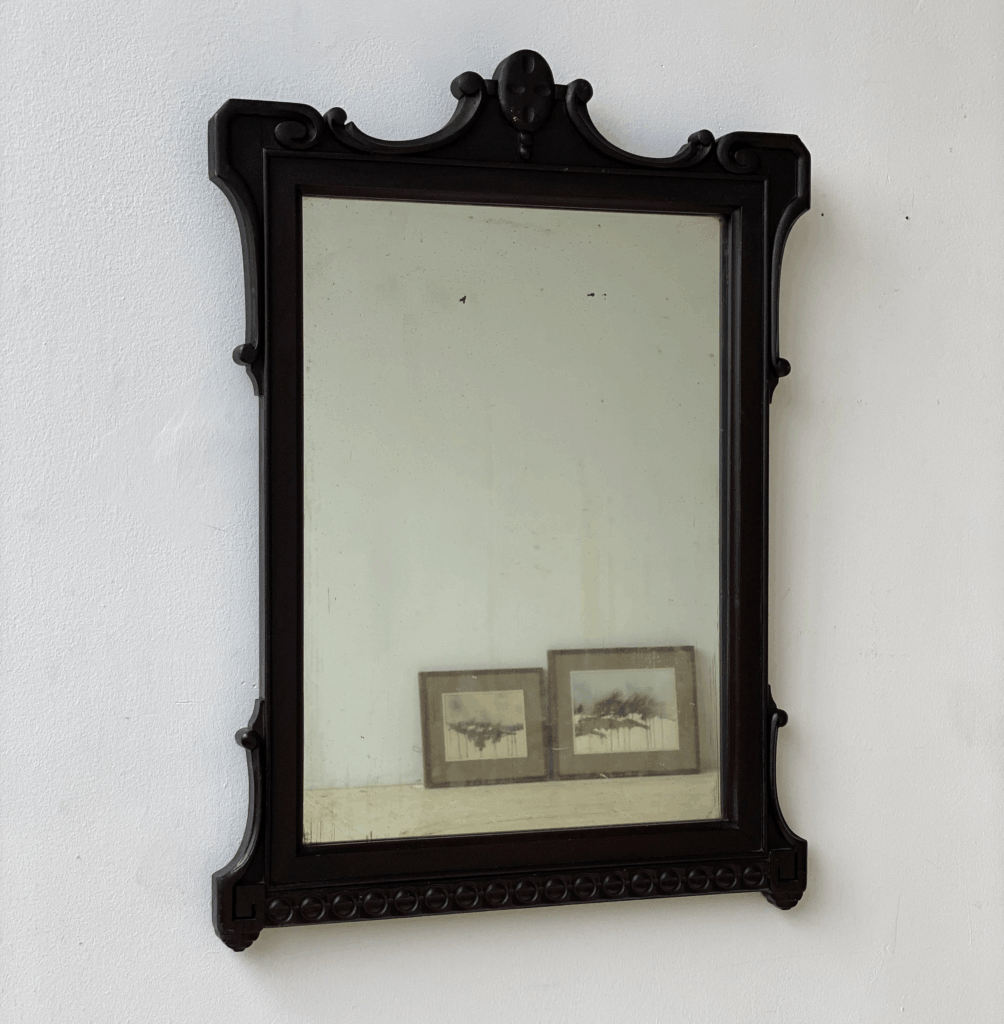
The Victorian Ebonized Mirror, first produced in the late 19th century, features a dark, glossy black finish called ebonizing, which gives the wood a striking, polished appearance. This mirror was typically found in more formal Victorian spaces such as parlors or libraries. The frame often included carvings of classical figures or geometric patterns, showcasing the era’s love for intricate design. The value of the Victorian Ebonized Mirror typically ranges from $600 to $2,000, depending on its condition and level of detail.
What distinguishes the Ebonized Mirror is its glossy, blackened frame that enhances the ornamental features of the design. The use of ebonized wood allowed the mirror to complement both gold and silver accents in the room, creating a more polished look. These mirrors were often used in conjunction with other furniture pieces in the room, providing a cohesive, luxurious feel. The combination of dark wood with highly detailed carvings gives the Ebonized Mirror its classic Victorian aesthetic. Collectors are still drawn to this style for its elegance and historical significance.
Victorian Convex Mirror
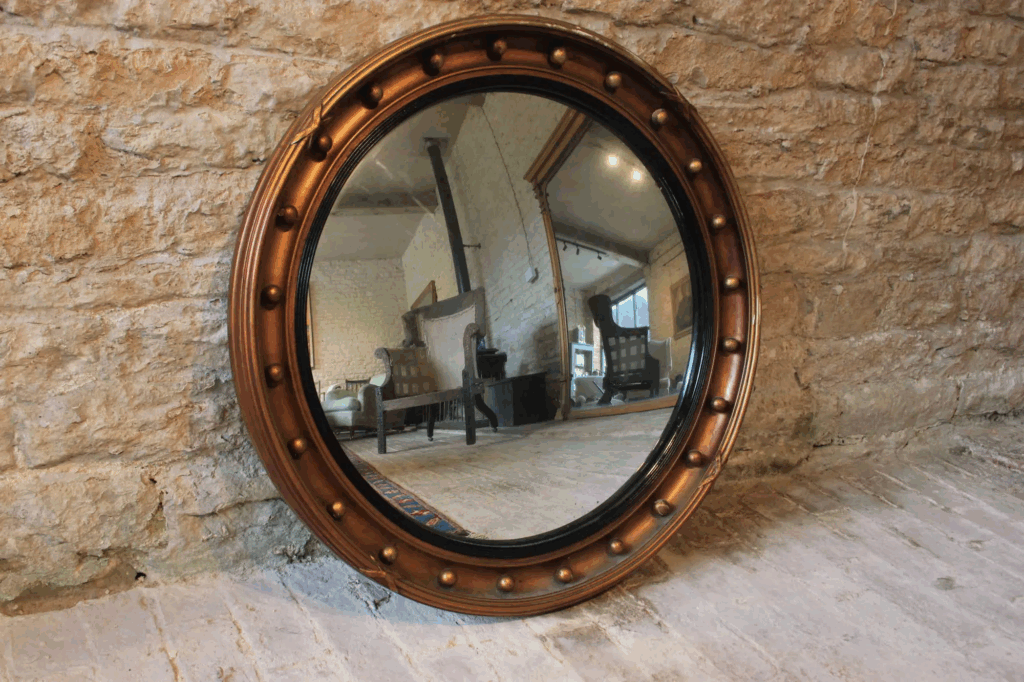
Produced throughout the Victorian era, the convex mirror was designed to create a wider field of view with its bulging glass. The frame was usually made of wood and was often decorated with ornate details such as floral motifs or geometric shapes. This mirror was especially popular in foyers or hallways, where it could add both style and function. The market value of the Victorian Convex Mirror can range from $700 to $3,000, depending on the size and craftsmanship.
The defining feature of the Victorian Convex Mirror is its rounded, bulging glass, which distorts reflections in an intriguing way. This mirror’s design not only made it visually interesting but also functional by enhancing the sense of space in small areas. The frame, often gilded or painted, added an extra layer of luxury. This piece continues to be a favorite for collectors due to its unique design and historical appeal. The convex mirror remains a symbol of Victorian sophistication and innovation in decorative glasswork.
Victorian Carved Wood Mirror
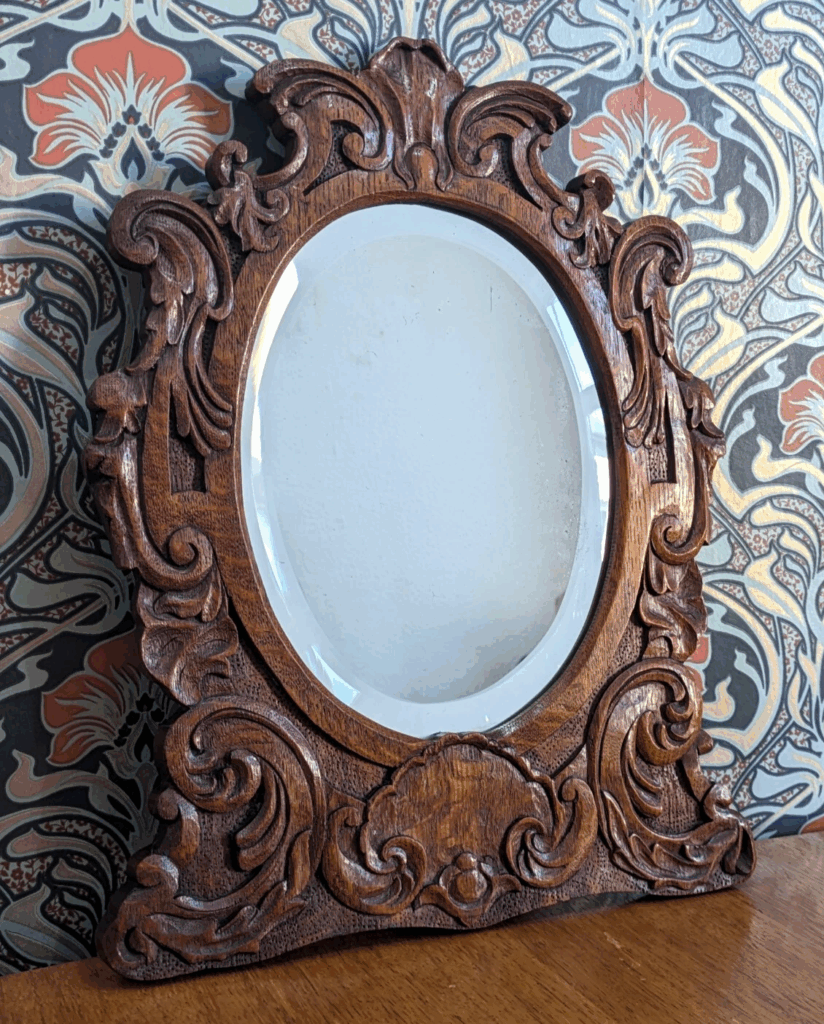
The Victorian Carved Wood Mirror, dating back to the late 1800s, features an elaborately carved wooden frame, often depicting floral, leaf, or geometric patterns. Made from durable hardwoods like oak or walnut, these mirrors were designed to be both functional and decorative. This style was popular in living rooms, drawing rooms, and dining rooms, where its ornamental design made it a focal point. The estimated market value of this mirror ranges from $500 to $2,000 depending on its size, age, and craftsmanship.
The detailed wood carving is what sets this mirror apart, showcasing the high level of skill that went into its production. The richness of the wood and the intricate designs evoke the luxury and refinement of the Victorian era. These mirrors often featured dark, polished finishes that gave them a stately, elegant appearance. The combination of durable wood and beautiful craftsmanship makes this mirror a lasting piece. Collectors appreciate this mirror for its timeless appeal and the artistry involved in its creation.
Victorian Marble-Topped Mirror
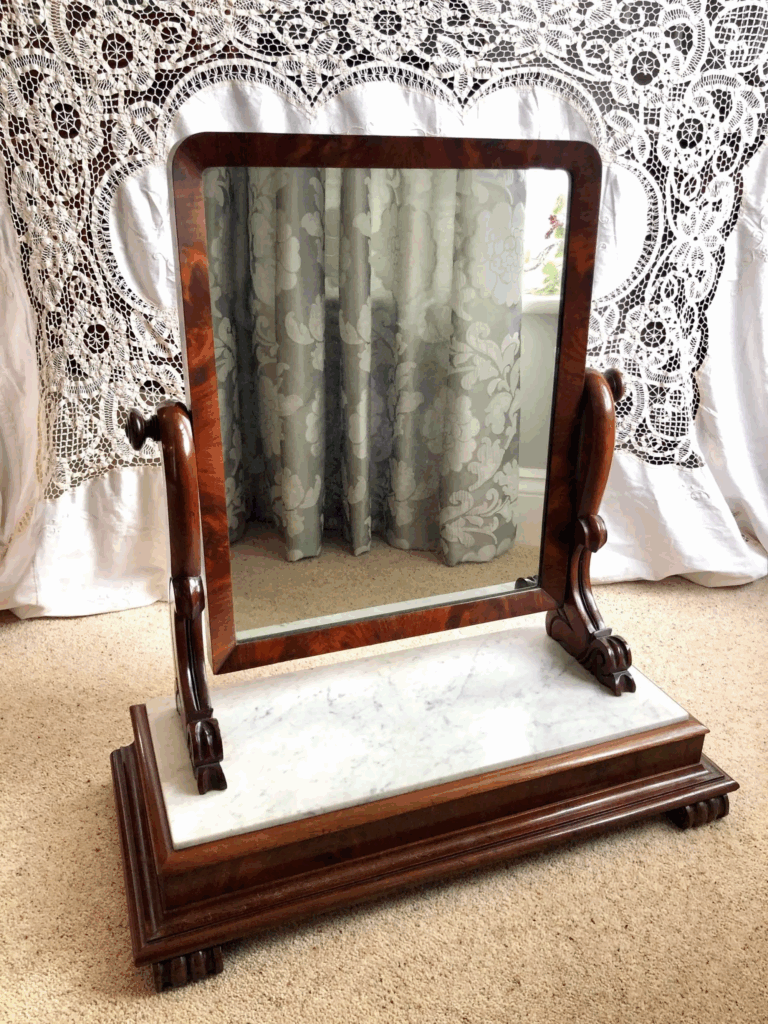
Produced in the late 1800s, the Victorian Marble-Topped Mirror combines the grandeur of marble with the elegance of Victorian design. The frame is often made of wood or metal, topped with a slab of marble that complements the intricate carvings below. These mirrors were typically used in entryways or bedrooms, where their refined design made a lasting impression. The market value for a Victorian Marble-Topped Mirror typically ranges from $800 to $3,000, depending on its material and condition.
The marble top adds a touch of luxury and stability to this otherwise delicate mirror. The marble contrasts beautifully with the detailed carvings and adds a tactile element that draws the eye. These mirrors are particularly sought after for their ability to combine the beauty of stone with the elegance of Victorian artistry. The versatility of this piece makes it ideal for many home styles, from traditional to more contemporary settings. For collectors, this mirror offers both aesthetic beauty and historical value.
Victorian Silver-Plated Mirror
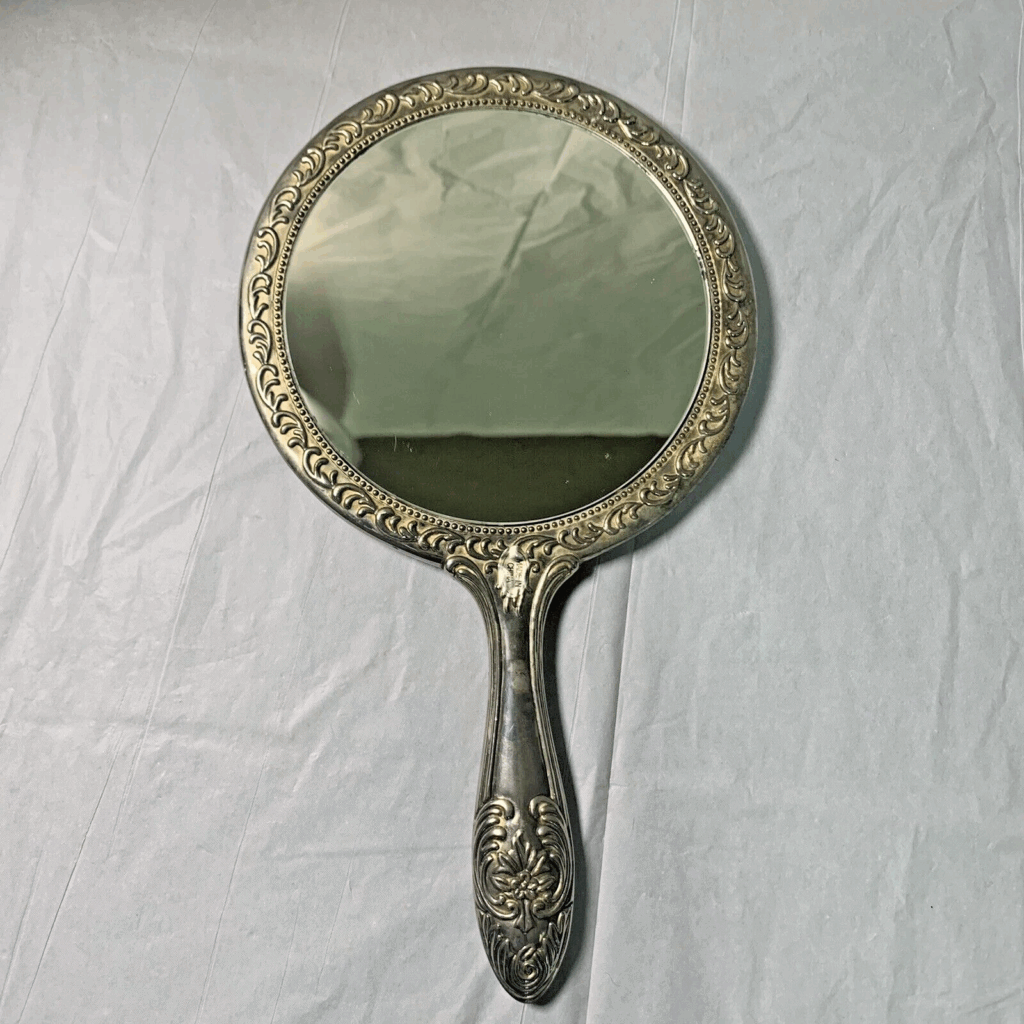
First introduced in the mid-19th century, the Victorian Silver-Plated Mirror features a frame made of wood or metal, coated with a layer of silver plating. These mirrors were often found in Victorian dining rooms or drawing rooms, where they added a touch of sophistication and class. The silver-plated frame often reflected the high status of the homeowner. Market values typically range from $400 to $1,500, depending on size and condition.
The silver-plated finish gives this mirror a brilliant, polished look, contrasting beautifully with the often dark interior woods. This piece was prized for its ability to complement both rich textiles and elegant furniture. The reflective properties of silver added a sense of brightness and luxury to any room. Collectors value these mirrors for their ability to elevate the look of a space while maintaining the classic Victorian aesthetic. This mirror remains a sought-after item for anyone looking to bring historical elegance into their collection.
Victorian Cherub Mirror
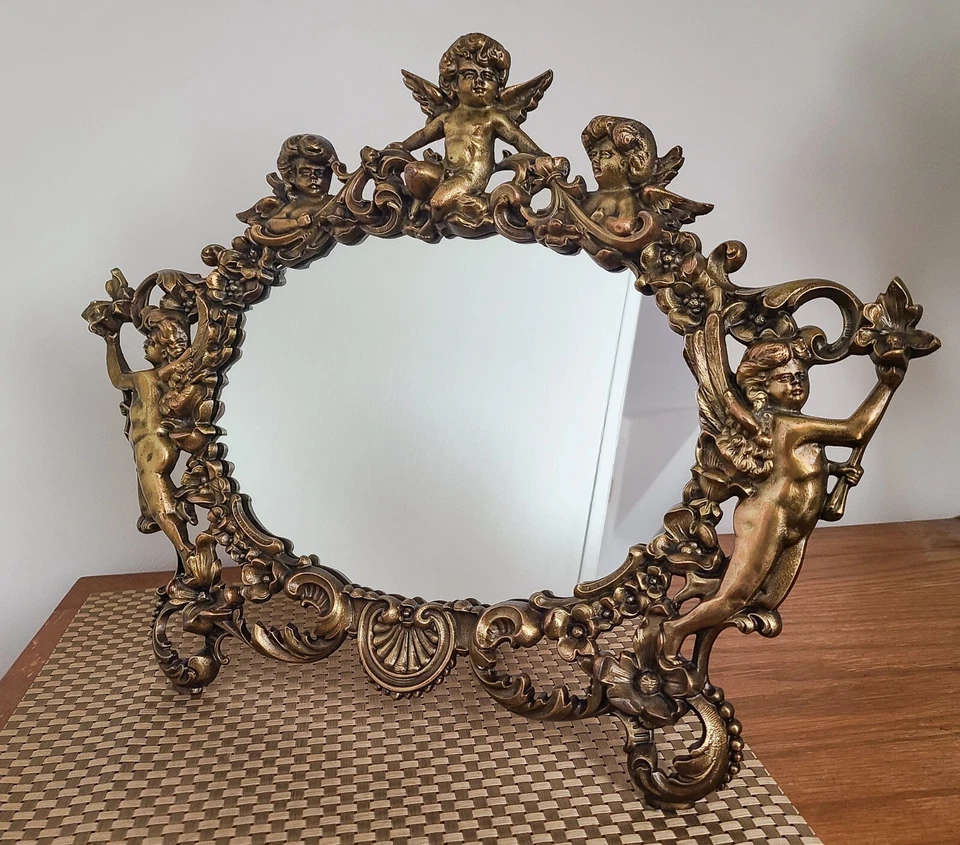
Introduced in the late 19th century, the Victorian Cherub Mirror features a frame adorned with cherubic figures, which were symbolic of innocence and purity during the period. Made from wood, the frame is typically gilded and features delicate carvings that reflect the opulence of Victorian design. This mirror was often placed in bedrooms or drawing rooms, where its symbolism and beauty were appreciated. The market value for this mirror ranges from $800 to $2,500, depending on its size and condition.
What makes the Victorian Cherub Mirror stand out is the inclusion of playful cherub figures, which adds both charm and luxury. The gilded finish emphasizes the intricate carvings, making it an elegant centerpiece for any room. Its design, while detailed, remains subtle enough to fit in a variety of decor styles. The cherubs symbolize the era’s fascination with divine and romantic themes, making this mirror a sought-after piece. Collectors continue to seek this mirror due to its blend of beauty, history, and craftsmanship.
Victorian mirrors are truly remarkable for their elegance and detailed craftsmanship. They continue to be highly sought after by collectors for their historical significance and artistic beauty.
This article originally appeared on Avocadu.
